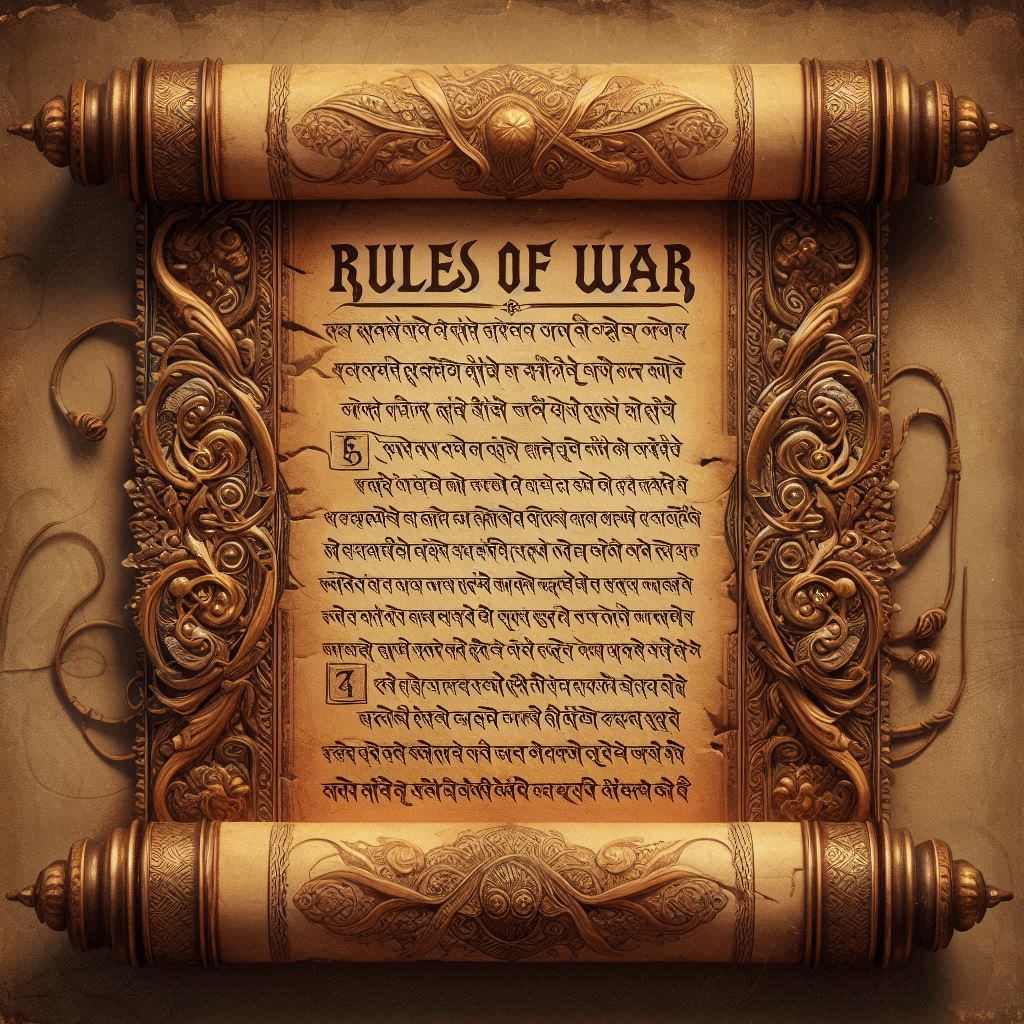The List of Rules to Follow During the War – Stories from Bhishma Parva
Before the war began, the Kauravas and Pandavas agreed upon a set of rules to follow on the battlefield. These were established according to the laws of dharma.

- When the battle ends (for the day), the warriors will not carry the hostility off the battlefield and continue to maintain their previous friendly relations (of course, Duryodhana has always considered the Pandavas his enemies, so his behavior on and off the battlefield doesn’t change).
- They would not resort to deceit again (implying that they wouldn’t repeat the trickery of the dice game).
- Those who fight with words should be countered with words (and not weapons).
- Those who withdraw from the battle should not be attacked until they are ready to fight again (this is to prevent injured warriors from being killed when they cannot defend themselves. Not surprisingly, Duryodhana and Karna go off the field many times using the same clause).
- A ratha (chariot warrior) should fight a ratha, the one on an elephant should fight an opponent on an elephant, a horseback warrior should face his equal on a horseback, and a foot soldier should fight a foot soldier (this is for face-off and duels).
- The strike should be by valour, age, energy, and appropriateness of the opponent after a challenge has been issued. It should not be against someone distressed (possibly because of an injury), unsuspecting (not aware that a challenge has been issued), fighting someone else (already engaged in a duel), distracted (not alert), or retreating (leaving the battlefield temporarily or turning his back on one warrior to fight another).
- A warrior without armour or weapon should not be killed (both sides broke this rule; first the Kauravas by killing a weapon-less Abhimanyu, and then Satyaki by killing Bhurisravas, who sat meditating and gave up the fight).
- One should never strike charioteers, those carrying burdens (men and animals), and those not directly involved in the fight (drum beaters, trumpeter blowers, purohits, Brahmins, vaidyas, etc.)
However, charioteers were often victims when the warriors were engaged in a duel. They were safe when there was no warrior in the chariot or when the warrior was injured and incapable of defending the charioteer.
The rules of war were more or less followed for the first ten days when Bhishma was the chief commander of the Kaurava army. After his demise, the warriors straddled the lines at times. Abhimanyu’s death was one such example where six experienced warriors attacked a single opponent and continued to fight him even when he was without his chariot. Similarly, the war proceeded into the night on day fourteen after Jayadratha’s death.
